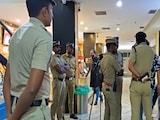SpaceX launched its Crew-11 mission to the International Space Station (ISS) on August 1, carrying four astronauts and an experiment with disease-causing bacteria. The scientists at the Sheba Medical Center in Israel collaborated with US-based space tech company SpaceTango to develop a study that aims to examine how microgravity affects the growth of bacterial species.
The groundbreaking experiment includes E. coli, Salmonella bongori, and Salmonella typhimurium to study how microgravity affects bacterial growth and gene expression.
Scientists will study how space conditions impact bacterial behaviour, including antibiotic resistance and virulence, to better protect astronauts' health on long-duration missions.
Also Read | Agra-Born Arvi Bahal To Fly To Edge Of Space Aboard Blue Origin Mission
"We know that space conditions affect bacterial behaviour, including how they grow, express genes, and acquire traits like antibiotic resistance or virulence," Prof Ohad Gal-Mor, Head of the Infectious Diseases Research Laboratory at Sheba Medical Center, said in a statement.
"This experiment will allow us, for the first time, to systematically and molecularly map how the genetic expression profile of several pathogenic bacteria changes in space."
The fact that bacteria behave differently in space is well-documented. They often grow faster and display altered characteristics. The bacteria might harm astronauts, especially during long-duration missions, as they are more prone to infections, because of a combination of microgravity, radiation, stress and changes in the human microbiome.
Hence, microbiology and immunology become vital components of modern and future space medicine.
Also Read | Glaciers On Mars Are Mostly Water Ice, Study Finds
Professor Gal-Mor said that the fresh insights will help our understanding of infectious disease risks in space travel, and also expand our knowledge of gene regulation and bacterial physiology in general.
The statement mentioned that the bacteria will be stabilised, frozen at -80 degrees C and returned to Earth after growth under microgravity. The molecular and transcriptional analysis and direct comparison to bacteria grown simultaneously in an identical lab setup on Earth.















